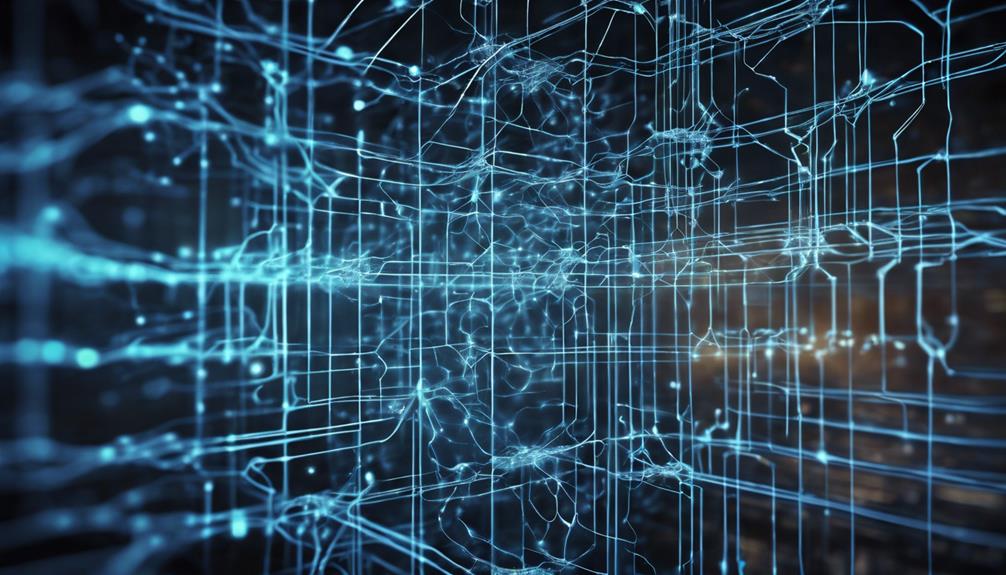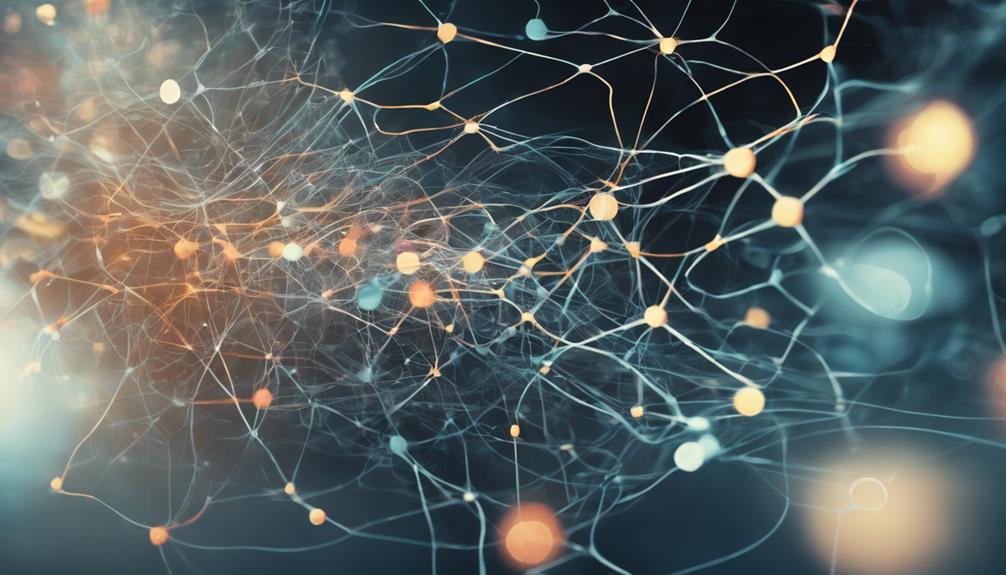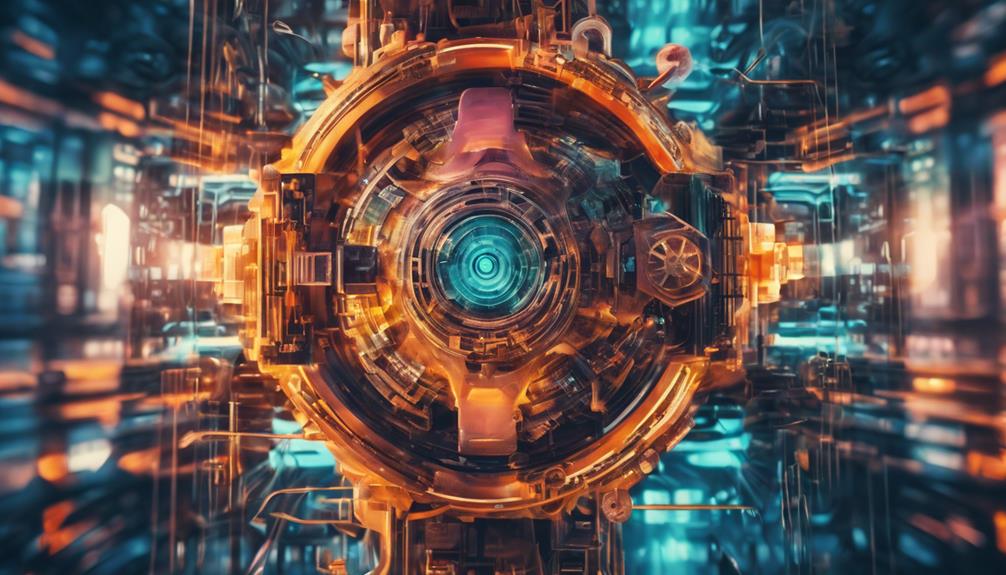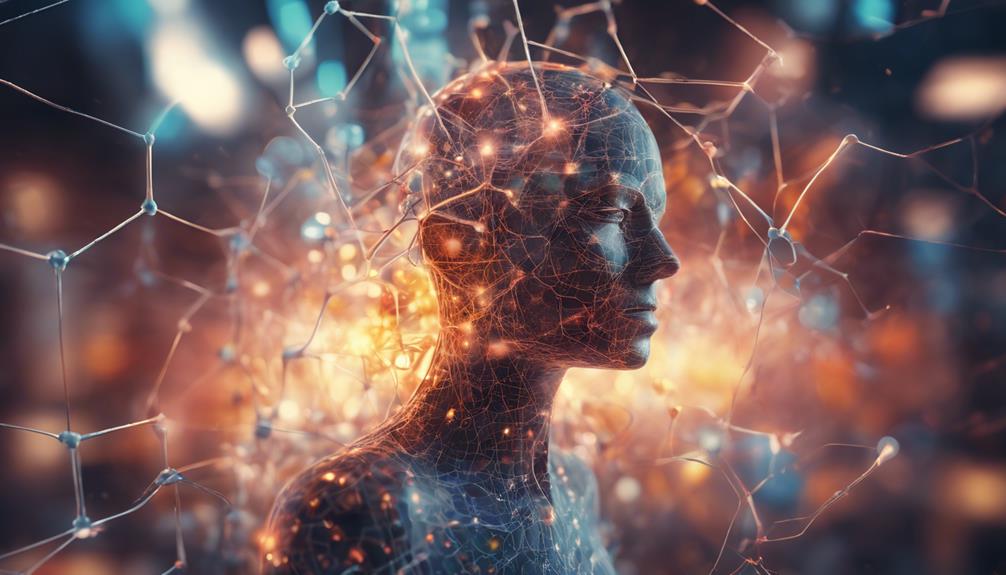Physical Address
304 North Cardinal St.
Dorchester Center, MA 02124
Physical Address
304 North Cardinal St.
Dorchester Center, MA 02124

When it comes to image recognition, several neural network architectures have emerged as top performers. LeNet laid the foundation, while AlexNet catapulted deep learning into the mainstream. VGGNet revolutionized computer vision with its design, and GoogLeNet's Inception module design captured features at multiple scales. ResNet enabled deep neural networks to learn deeper representations, and DenseNet connected every layer for feature reuse. Xception utilized depthwise separable convolutions, SqueezeNet designed for efficient image analysis, and MobileNet built for real-time recognition. These architectures have pushed the boundaries of image recognition, and there's more to explore when it comes to their applications and advancements.

I often find myself drawn to the LeNet architecture when tackling image classification tasks, as it laid the foundation for many subsequent neural network architectures. This pioneering model, introduced in the 1990s, demonstrated the power of convolutional neural networks (CNNs) in image recognition. When working with LeNet, I prioritize image preprocessing to guarantee high-quality input data. This involves resizing images to a uniform size, normalizing pixel values, and possibly applying data augmentation techniques to increase the dataset's diversity.
The LeNet architecture consists of two convolutional layers, each followed by a pooling layer, and three fully connected layers. The convolutional layers utilize small, overlapping convolutional kernels to scan the input image, detecting local patterns and features. These kernels are small, typically 5×5 pixels, allowing the network to capture fine-grained details. The pooling layers, on the other hand, downsample the feature maps, reducing spatial dimensions while retaining important information.
One breakthrough architecture that catapulted deep learning into the mainstream spotlight is AlexNet, a powerful neural network that dominated the ImageNet Large Scale Visual Recognition Challenge (ILSVRC) in 2012. I still remember the excitement when Alex Krizhevsky, Ilya Sutskever, and Geoffrey Hinton introduced this groundbreaking model. Their innovative architecture not only won the ILSVRC but also marked a significant shift in the field of computer vision.
AlexNet's success can be attributed to its unique design, which includes multiple convolutional and max-pooling layers. The model's ability to learn complex features from raw images revolutionized the field of image recognition. I've seen firsthand how AlexNet's architecture has inspired numerous variants and extensions, further pushing the boundaries of deep learning.
Before feeding images into AlexNet, image preprocessing is essential. Techniques like data augmentation, normalization, and cropping play a vital role in ensuring that the model learns from diverse and representative data. Additionally, model interpretability is crucial in understanding how AlexNet makes predictions. Techniques like feature visualization and saliency maps enable researchers to peek into the model's decision-making process.
AlexNet's impact on the deep learning community has been profound. Its success has paved the way for more advanced architectures, and its influence can still be seen in many state-of-the-art models. As I reflect on AlexNet's contributions, I'm reminded of the power of innovation and collaboration in driving progress in AI research.

As I explore the domain of image recognition, I'm excited to discuss the VGGNet architecture, which has revolutionized the field of computer vision. One of the key aspects of VGGNet is its architecture design, which is characterized by the use of convolutional layers with a small filter size and a large number of parameters. By examining the feature extraction capabilities of VGGNet, I'll highlight its remarkable ability to learn rich feature representations from images.
As I explore the architecture design of VGGNet, I'm excited to investigate its inner workings. Typically, the VGGNet architecture relies on a sequence of convolutional and max-pooling layers to extract features from input images, producing a dense representation of visual data. This design allows VGGNet to learn robust features that are essential for image recognition tasks.
The architecture's simplicity is key to its success. By stacking multiple neural primitives, such as convolutional and max-pooling layers, VGGNet can learn complex features from images. However, this simplicity can also lead to cognitive biases, where the model becomes overly reliant on certain features and neglects others. To mitigate this, researchers have employed techniques like data augmentation and regularization to encourage the model to learn more diverse and robust features.
I'll now explore how VGGNet's architecture enables effective feature extraction, which is the backbone of its image recognition capabilities. The key to VGGNet's success lies in its ability to extract features from images, allowing it to accurately identify objects and scenes. This is achieved through a combination of spatial filtering and texture analysis. Spatial filtering involves applying filters to small regions of the image to detect edges, lines, and other features. VGGNet uses multiple convolutional layers with small filters to extract features at multiple scales, allowing it to capture both local and global patterns in the image. Texture analysis is also essential, as it enables the network to identify the texture and patterns within an image. By combining these techniques, VGGNet is able to extract a rich set of features that are essential for image recognition. This feature extraction capability is what sets VGGNet apart from other neural networks and enables it to achieve state-of-the-art performance in image recognition tasks.
As I explore the world of neural network architectures for image recognition, I'm thrilled to investigate the GoogLeNet Inception Module Design.
The innovative Inception module design in GoogLeNet allows it to capture features at multiple scales simultaneously, greatly enhancing its image recognition capabilities. This is achieved through a unique module optimization approach, where multiple parallel branches with different filter sizes and pooling layers are combined to capture features at various scales. This design enables the network to learn rich feature representations, leading to improved performance in image recognition tasks.
Another key aspect of the Inception module is its ability to scale depth efficiently. By using depth scaling, the network can increase its capacity to learn complex features without considerably increasing the number of parameters. This is particularly important in image recognition, where datasets can be vast and complex. The Inception module's design allows it to strike a balance between depth and width, enabling it to capture a wide range of features while maintaining computational efficiency.
The combination of module optimization and depth scaling in the Inception module has made GoogLeNet a benchmark for image recognition tasks. Its ability to capture features at multiple scales and scale depth efficiently has led to state-of-the-art performance in various image recognition challenges. As I continue to explore the world of neural network architectures, I'm excited to see how the Inception module's innovative design has paved the way for future advancements in image recognition.

As I move on to discuss the ResNet Architecture for Image Analysis, I'll be exploring the innovative concepts that make this architecture so effective. Specifically, I'll be examining the Residual Learning Blocks and how they enable the training of deep networks. By understanding these components, I'll uncover the secrets behind ResNet's remarkable image recognition capabilities.
By delving into the details of how this works, the ResNet architecture revolutionizes image analysis by enabling deep neural networks to learn much deeper representations than previously possible. I'm excited to explore the specifics of this innovation.
In traditional neural networks, each layer learns a complex function to fit the input data. However, as the network deepens, the complexity of these functions grows exponentially, making it difficult to optimize. Residual learning blocks solve this issue by introducing residual connections, which allow each layer to learn a residual function, i.e., the difference between the layer's input and output. This approach enables the network to learn much deeper representations without succumbing to the vanishing gradient problem.
Deep supervision is another key aspect of residual learning blocks. By adding supervision to earlier layers, the network is forced to learn more robust features, which in turn improves the overall performance. This approach has been instrumental in achieving state-of-the-art results on various image recognition benchmarks.
I'll explore how the ResNet architecture's innovative design enables the successful training of deep networks, a feat previously hindered by the vanishing gradient problem. The key to this success lies in its ability to effectively optimize the network's parameters during training. This is achieved through the use of optimization techniques such as stochastic gradient descent (SGD) and Adam, which enable the network to converge to a minimum loss. Additionally, the ResNet architecture's use of residual connections helps to alleviate the vanishing gradient problem, allowing for the successful training of deep networks.
Another essential aspect of ResNet's deep network training is its implementation of overfitting strategies. Techniques such as dropout and L1/L2 regularization help to prevent the network from overfitting to the training data, ensuring that it generalizes well to unseen data. By combining these strategies with its innovative architecture, ResNet is able to achieve state-of-the-art performance on various image recognition tasks.
As I investigate the world of neural network architectures, I'm excited to explore the capabilities of DenseNet for image pattern recognition. DenseNet, a family of neural network architectures, revolutionizes image pattern recognition by connecting every layer to every other layer, allowing it to harness the benefits of feature reuse. This innovative design enables the network to learn complex representations and enhances its ability to recognize patterns in images.
The applications of DenseNet are vast, and I'm particularly interested in its ability to investigate robust image embeddings. Image embeddings are essential in computer vision tasks, as they enable machines to comprehend and analyze visual data. DenseNet's capability to produce high-quality embeddings makes it an appealing choice for tasks such as image retrieval, clustering, and classification.
In addition to its applications in image embeddings, DenseNet has been successfully applied to various computer vision tasks, including object detection, segmentation, and generation. Its flexibility and adaptability make it a valuable tool for researchers and developers seeking to push the boundaries of image recognition.
As I continue to explore the capabilities of DenseNet, I'm struck by its potential to discover new possibilities in image pattern recognition. With its unique architecture and robust feature learning capabilities, DenseNet is poised to revolutionize the field of computer vision and beyond.

As I explore Inception-v3 for image classification tasks, I'm drawn to its innovative module design principles that enable it to tackle complex image recognition challenges. These principles allow the model to capture multi-scale features, leading to a significant boost in classification performance. By examining these design principles and their impact on performance, I can gain a deeper understanding of Inception-v3's capabilities and limitations.
Building upon the success of its predecessors, Inception-v3's module design principles revolutionize image classification tasks by introducing innovative architectural elements that greatly enhance performance. I've found that one of the key aspects of Inception-v3's module design is its emphasis on modular scalability. This allows the network to be easily scaled up or down depending on the complexity of the task at hand. By breaking down the network into smaller, reusable modules, Inception-v3 achieves a level of flexibility that is unmatched by its predecessors.
Another pivotal aspect of Inception-v3's module design is its hierarchical complexity. By stacking modules on top of one another, Inception-v3 creates a hierarchical structure that allows it to capture features at multiple scales. This enables the network to recognize patterns and objects at varying levels of complexity, from simple edges to complex textures. The combination of modular scalability and hierarchical complexity makes Inception-v3 an incredibly powerful tool for image classification tasks. By leveraging these design principles, Inception-v3 achieves state-of-the-art performance on a range of image classification benchmarks.
I've witnessed a significant classification performance boost in image classification tasks with Inception-v3, which surpasses its predecessors in accuracy and efficiency. This boost is largely attributed to the architecture's ability to effectively utilize data augmentation and transfer learning. Data augmentation, a technique that artificially increases the size of the training dataset, allows Inception-v3 to learn more robust features and reduce overfitting. Additionally, transfer learning enables the model to leverage pre-trained weights, fine-tuning them for specific tasks and resulting in improved performance. The combination of these techniques enables Inception-v3 to achieve state-of-the-art results in various image classification benchmarks. In my experience, Inception-v3's modular design and parallel branches allow for efficient computation and feature extraction, further contributing to its superior performance. By leveraging these advancements, Inception-v3 has become a go-to architecture for image classification tasks, offering unparalleled accuracy and efficiency. As a result, it has become a cornerstone of modern computer vision applications.
Here's my take on the Xception architecture for image features.
In the Xception architecture, depthwise separable convolutions are leveraged to reduce computational costs while maintaining accuracy in image feature extraction. This innovative approach has led to significant improvements in image recognition tasks. By decoupling the spatial and channel-wise convolutions, Xception's depthwise separable convolutions reduce the complexity of traditional convolutional neural networks (CNNs).
One of the primary advantages of Xception is its ability to reduce computational costs while maintaining accuracy. This is achieved through the depthwise separability of convolutions, which allows for a significant reduction in the number of parameters required. As a result, Xception models are more computationally efficient and require less memory, making them ideal for deployment on resource-constrained devices.
The Xception complexity is further reduced by the use of pointwise convolutions, which are used to project the output of the depthwise convolution to a higher-dimensional space. This allows for more efficient feature extraction and improved performance.

As I explore the world of neural network architectures for image recognition, I'm excited to investigate SqueezeNet, a neural network architecture designed for efficient image analysis, achieves impressive performance while drastically reducing the number of parameters required. This innovative architecture has revolutionized the field of image recognition by providing a more efficient and lightweight solution.
SqueezeNet's key innovation lies in its fire module, which consists of a squeeze layer followed by an expand layer. The squeeze layer reduces the number of channels, while the expand layer increases the number of channels. This design enables SqueezeNet to achieve impressive performance while requiring significantly fewer parameters than other state-of-the-art architectures.
However, SqueezeNet is not without its limitations. One major drawback is its limited ability to capture complex contextual information. Additionally, SqueezeNet's fire module can lead to a loss of spatial information, which can negatively impact its performance. Despite these limitations, SqueezeNet's efficient tradeoffs make it an attractive solution for applications where computational resources are limited.
Building on the efficiency-focused design of SqueezeNet, MobileNet takes a similar approach to optimize image recognition for real-time applications, leveraging depthwise separable convolutions to drastically reduce computational costs and model size. This enables the deployment of image recognition models in resource-constrained environments, making it an ideal choice for real-time deployment in edge computing scenarios.
I've found that MobileNet's architecture is particularly well-suited for applications that require rapid processing and low latency, such as autonomous vehicles, smart home devices, and security systems. By reducing the computational overhead, MobileNet enables these devices to perform image recognition tasks in real-time, without relying on cloud-based processing.
One of the key advantages of MobileNet is its ability to maintain high accuracy while minimizing model size and complexity. This makes it an attractive choice for edge computing applications, where storage and computational resources are limited. Additionally, MobileNet's architecture is highly flexible, allowing it to be easily integrated with other models and frameworks.
In real-world applications, MobileNet has been used in a variety of scenarios, including object detection, facial recognition, and image classification. Its ability to provide fast and accurate results makes it an ideal choice for applications that require real-time image recognition. Overall, MobileNet is a powerful tool for anyone looking to deploy image recognition models in resource-constrained environments.
"I'm excited to see image recognition's impact in real-world scenarios, like Facial Authentication for secure logins and Healthcare Diagnostics for accurate disease detection – it's liberating to think about the possibilities!"
When I'm training neural networks for image classification, I've found that overfitting is a major concern – that's why I rely on regularization techniques and early stopping to prevent my models from becoming too specialized.
Personally, I believe data augmentation is essential in image recognition models as it enhances data quality, ensuring model robustness by artificially increasing diversity, consequently freeing my models from bias and overfitting constraints.
I believe neural networks can be used for image recognition in low-light environments by incorporating noise robustness and low light enhancement techniques, allowing for more accurate detection and freedom from environmental constraints.
"I tackle class imbalance in image recognition datasets by using class weighting methods, where I assign higher weights to minority classes, and sampling techniques, like oversampling or undersampling, to balance the data, ensuring fairness and accuracy in my models."